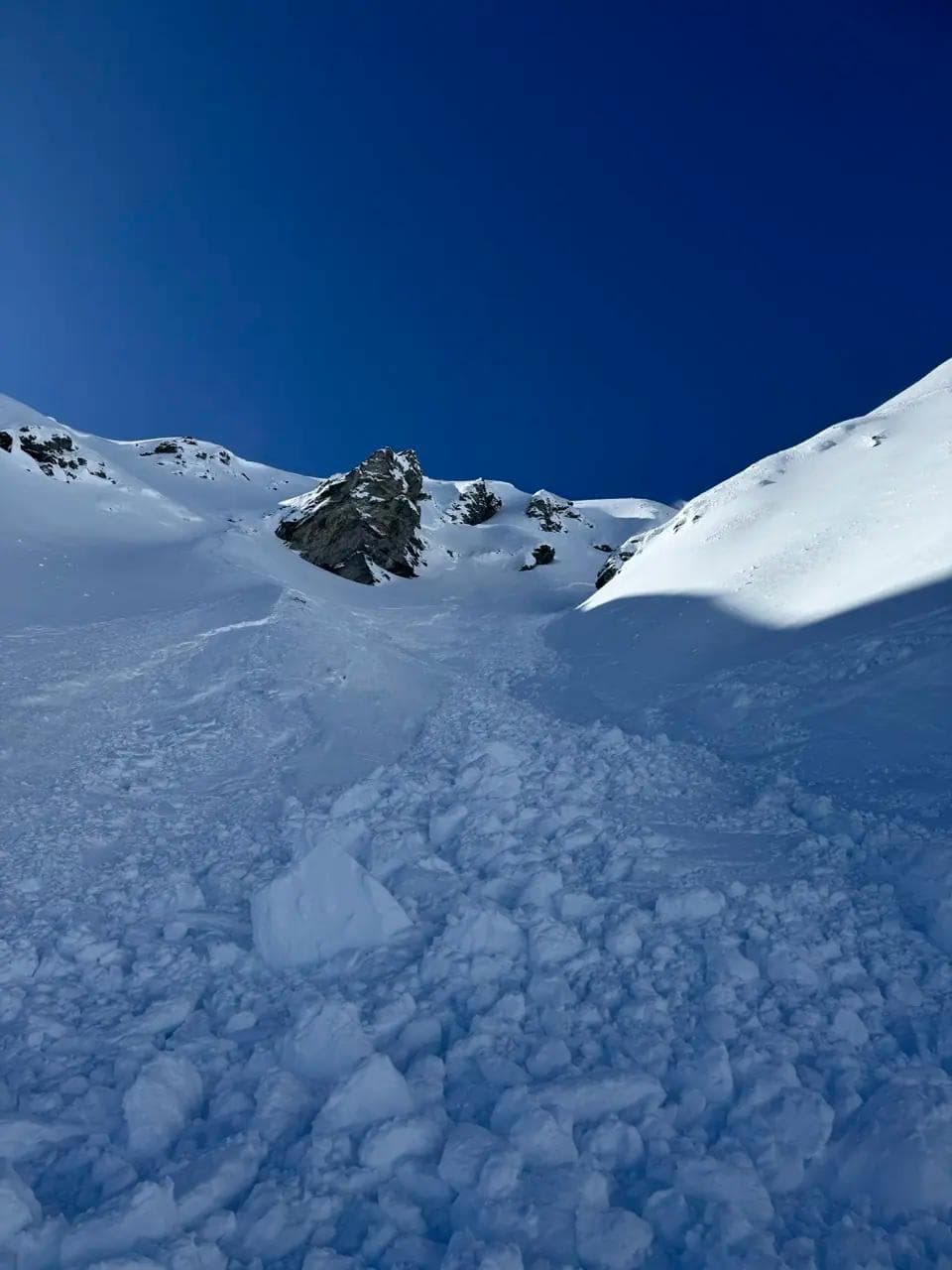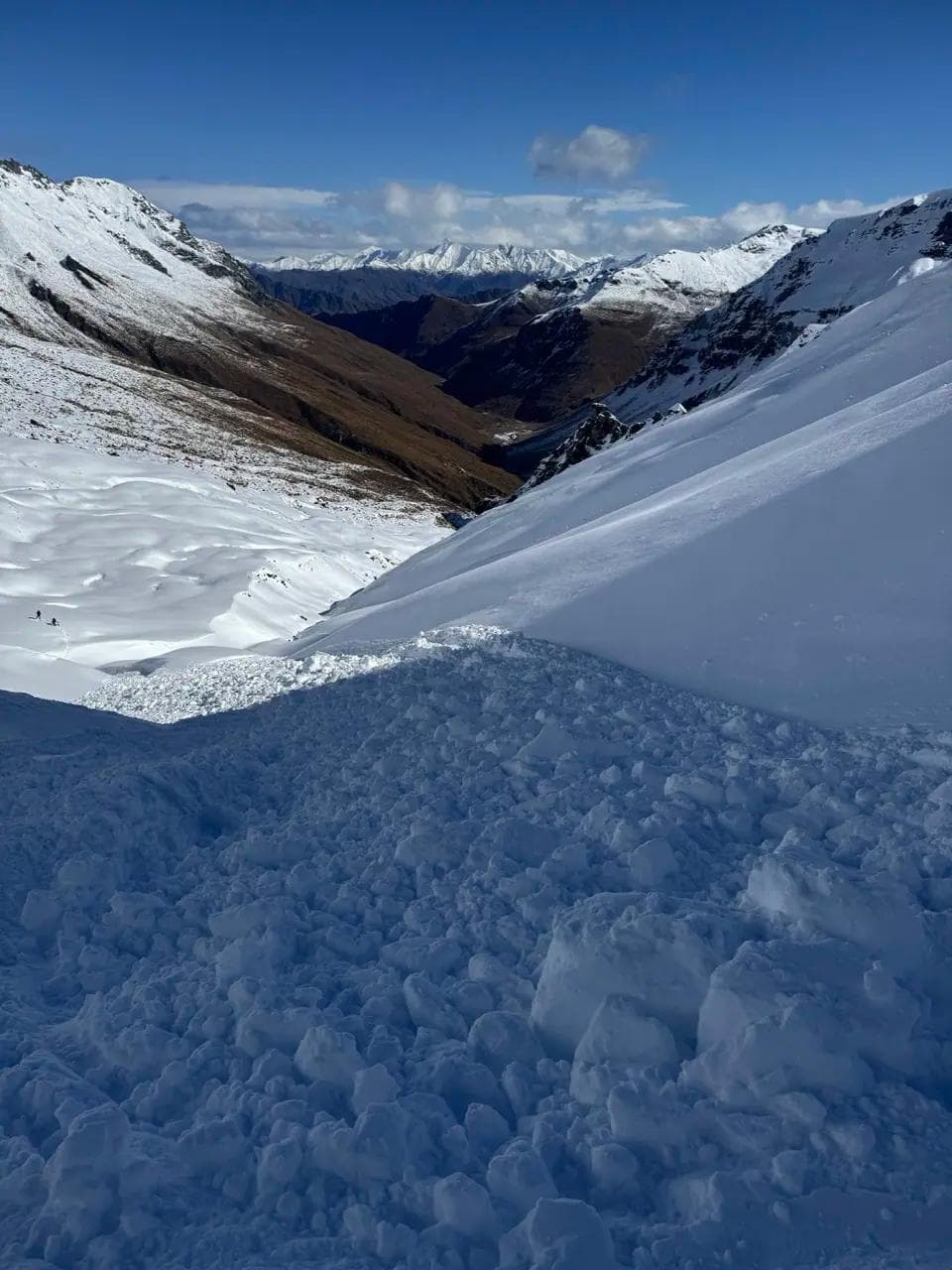
Avalanche Incident at Treble Cone Highlights Backcountry Risks
Published Date:
Categories
Avalanche Narrowly Misses Tragedy in Treble Cone Backcountry
A group of four skiers had a close call on Saturday when they triggered an avalanche in the Treble Cone backcountry near Wānaka, New Zealand. The incident, occurring just 2 km from the ski field boundary, saw three skiers carried downslope and one partially buried. While all managed to self-rescue with only minor injuries, the event underscores the very real risks of backcountry skiing, particularly during periods of unstable conditions.

The avalanche, classified as size 2, measured 250 metres long, 15 metres wide, and had a crown depth of 1 metre. It was triggered by a cornice fall at 1,810 metres elevation on a 35-degree south-facing slope. This highlights the unpredictable nature of snowpack stability, especially following recent spring snowfall and strong winds.
Eyewitness Jeremy Blake captured video footage of the incident, which he shared as a public service announcement. His account of the skiers congregating on a cornice before the slide serves as a stark reminder of how quickly conditions can deteriorate in alpine environments.
The New Zealand Mountain Safety Council (MSC) reported this as one of two human-triggered avalanches in the Wānaka region that weekend. MSC Chief Executive Mike Daisley described both incidents as 'very serious, potentially life-threatening'. The current avalanche danger rating in the area is HIGH, with natural avalanches likely and human-triggered avalanches very likely.
Despite the severity of the situation, it's worth noting that neither Search and Rescue nor the Treble Cone avalanche response team needed to intervene, as the skiers managed to reach safety on their own. However, this outcome shouldn't be seen as diminishing the gravity of the incident.

This event serves as a timely reminder of the critical importance of thorough preparation and sound decision-making in backcountry skiing. The New Zealand Avalanche Advisory had forecast dangerous conditions for the day, explicitly recommending against backcountry travel in the area.
While it's easy to criticise the skiers involved for their apparent lapse in judgment, it's more constructive to view this as a learning opportunity for the wider skiing community. The incident reinforces several key principles of backcountry safety:
- Always check and heed avalanche forecasts
- Avoid high-risk areas during periods of instability
- Carry proper safety equipment (beacon, shovel, probe)
- Make conservative decisions, especially in unfamiliar terrain
As climate change continues to affect snow conditions globally, we may see an increase in such unstable periods. Skiers and riders must remain vigilant and adaptable to these changing conditions.
Ultimately, while backcountry skiing offers unparalleled experiences, it comes with inherent risks that must be respected. No powder run is worth risking your life over. As we move further into the Southern Hemisphere's spring season, all backcountry users would do well to err on the side of caution and prioritise safety above all else.


